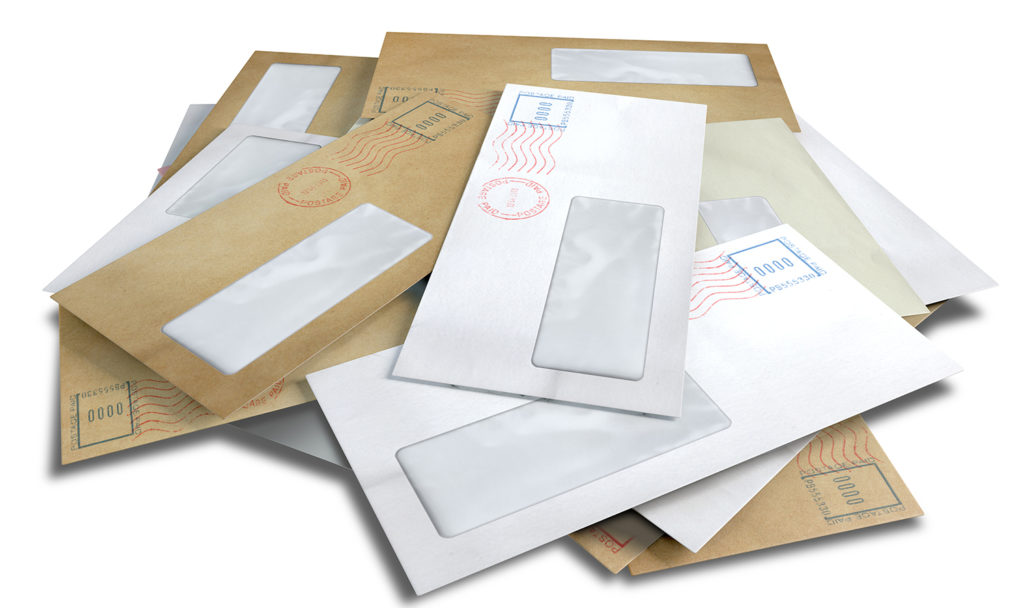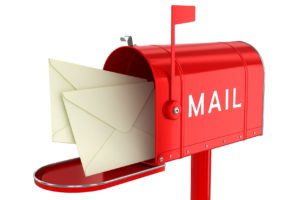
Direct mail is a valuable fundraising strategy, but figuring out how to send a nonprofit appeal can be confusing.
It seems like it should be simple. You’re just mailing a letter asking for a donation, right?
But there are dozens of ways it can go wrong.
And SO many questions that need answering before you start.
Should you use a mailhouse? Recruit volunteers to stuff and stamp hundreds of envelopes? Work with your post office to send your appeal with a nonprofit discount?
Who should write the letter? What story should you tell? How should you word the Ask? How much should you ask for?
Should you enclose a return envelope? With a stamp already on it or not?
Writing an appeal letter is part art and part science. And knowing how to do it right is a skill.
There is a lot to figure out to ensure you send your appeal as efficiently and cheaply as possible, AND that it gets the results you’re looking for.
If you’re a beginner at mailing fundraising appeals, it’s really important that you understand the strategy and psychology behind what makes a good letter.
Planning Your Nonprofit Appeal
Ok, to get started planning a nonprofit appeal, answer these four key questions:
 1. What’s your offer? What are you asking people to give for? Your organization needs money, as all nonprofits do. But what will you spend the money on? What is your pitch for convincing supporters to send you money right now?
1. What’s your offer? What are you asking people to give for? Your organization needs money, as all nonprofits do. But what will you spend the money on? What is your pitch for convincing supporters to send you money right now?
The best time to send a nonprofit appeal is when you have an urgent need that you know your donors will want to fund. Sometimes that means talking about your ongoing operations in a way that feels urgent. An appeal should never be about begging. You are inviting supporters to be part of something that matters.
Keep in mind that if you ask donors to give for something specific, you’re obligated to use the money on that specific thing. In other words, be careful about asking for money that’s restricted to a specific purpose unless you really need the money for that specific purpose. Try to keep it unrestricted if possible so you aren’t locked into spending the money on only one aspect of your program.
2. Who will receive your appeal? Who is in your audience and how many are there? If you’re planning to send your appeal to current donors, lapsed donors, volunteers, and non-donors, you may need to segment your list and change the message just slightly for each segment so it resonates with them.
Also, consider how your monthly and major donors will perceive the letter. And do you really want these 2 groups to be part of your regular mail stream? Or should they be treated differently because of the nature of their gifts?
You may be planning a prospecting campaign, which involves sending direct mail to people who have never given or interacted with your organization. Most commonly, people purchase a list of addresses based on certain criteria, such as geography and income, and send their nonprofit appeal. Beware: renting a list is tricky business! And you can expect only 1% of the recipients to respond. Most nonprofits who try this lose money on the prospecting mailing. You’ll need a strategy to welcome new donors onboard and be prepared to finally make money the second or third time they give.
There may be times when it makes a lot of sense to buy a list for a mailing. For example, let’s say you may want to send a direct mail piece to everyone who lives within a 10-mile radius of your animal shelter letting them know a little about your organization’s work and inviting them to visit your website, sign up for your mailing list, follow you on social media, and attend an open house. This type of campaign is not a direct ask so much as an introduction.
3. How many letters will you send? 100? 1,000? 10,000? You can’t determine the most cost-effective way to send a nonprofit appeal until you know how many letters you plan to send.
Run a report to see how many mailing addresses you have for individual donors. I would omit foundations from this mailing and possibly leave corporate sponsors and event attendees out, too. Who you mail to depends on the timing of your mailing, how close it is to other fundraising activities, and what else you have planned, so check your fundraising plan and activity calendar to see what makes the most sense for your situation.
You could plan to send your letter only to donors you have a mailing address for but no email address. You could send the rest of your list the same appeal via email. If you want to limit the size of your list for cost purposes, consider sending your letter only to people who have given in the past 12 months via check.
4. What type of design do you envision? What your letter will look like is necessary to determine the best way to send your appeal. A one-page letter, front-and-back, along with a small reply envelope for returning a check is the simplest way to go. If many of your supporters are older, you may want to increase the font size and send a two-page letter. This will enable you to include more pull-out quotes and photos. Don’t limit the size just to keep cost down. Make the letter as long as it needs to be to adequately tell the story.
Do you want a special message on the outside of your envelope to tease people into opening the envelope? Or a special design? Envelope design can yield a better response, depending on your organization and audience. But this strategy can also backfire, so research carefully.
If you are introducing your organization to the community, an oversized postcard will get the job done.
Think about your audience and what they will respond to. There is an expression in direct mail, “Design with your grandmother in mind.” What type of mail would an older, loyal supporter like to receive? Your older, loyal supporters are most likely to read your appeal and send a check.
Should You Use a Mailhouse?
Now that you know what you want to do, it’s time to think about how you’ll get it done.
If you are sending more than 200 letters, it makes sense to consult two or three mailhouses for pricing. You may get sticker shock when they give you their estimates, but take into account the time you will save.
A mailhouse will:
 Print your appeal letter, mail merging the recipient’s name onto the letter and envelope (if necessary)
Print your appeal letter, mail merging the recipient’s name onto the letter and envelope (if necessary)- Check your addresses against current addresses (often called an NCOA update) and make any updates or corrections
- Design and print the indicia if you are using this method for mailing
- Stamp your envelopes, if you are using nonprofit stamps instead of an indicia
- Stuff and seal the envelopes
- Sort your letters by zip code
- And, finally, mail your appeal
Another consideration with a mailhouse is their expertise. They have strategies that save you money. For example, it may make sense to print the address on the letter and use a window envelope. This could yield savings, and not just because of cheaper printing costs. No one has to spend time matching the letter with the right envelope.
A good mailhouse knows how to save you money on postage. You will come out ahead financially with a mailhouse compared with sending your appeal yourself via first class mail because of the discount offered by nonprofit mailing. If you apply for a nonprofit discount through the USPS, you can probably save money by doing the job yourself.
But, oh Lordy, it’s a chore.
And it can be frustrating if the post office rejects your mailing because you missed a step or did something wrong.
What Your Nonprofit Appeal Will Cost
The cost of mailing a nonprofit appeal is not an isolated expense.
Plan out the entire cost of your campaign, keeping in mind that the more letters you send, the more the cost per letter decreases.
Take into account:
 Design costs, if you are hiring a graphic designer. For a basic appeal, this is not necessary. But if you are planning a package with a letter, pledge card, and custom envelope, you may need to hire a professional.
Design costs, if you are hiring a graphic designer. For a basic appeal, this is not necessary. But if you are planning a package with a letter, pledge card, and custom envelope, you may need to hire a professional. - Printing costs, even if you are using your organization’s printer. Ink is not cheap!
- Envelopes and paper. There is no need to splurge on higher quality paper products. You are a nonprofit, and people do not expect your print collateral to look fancy.
- The actual postage cost of sending through the USPS, whether you pay with nonprofit stamps or indicia
- Snacks you provide volunteers or gift cards you give them in appreciation
If you are sending 500 letters with a return envelope, you can expect to spend at least $1.10 per piece, depending on many variables. So you will need to receive $550 in donations just to break even. If your average gift is $40, you need 14 people to respond. That’s less than a 3 percent return rate, and direct mail can be counted on to deliver at least a 4 percent return, much more if you use strategies to get the best return possible, such as adjusting your message for different audiences.
Use these calculations to motivate you to write the best appeal letter you can, so you get your response rate up and receive the most donations possible, given the cost and labor. After all this work, you don’t want to give people any reason not to give!
Look for ways to drive the cost down. If you plan to include pledge or response cards, you can print them in larger quantities and use them for several appeals. A standard letter on letterhead will cost less than a professionally designed letter on glossy paper.
Once you plan out your costs, compare the cost of doing the job yourself with using a mailhouse. Go over all your options with the mailhouse, to make sure you are getting their best price. Consider the time you or a paid staff member will spend getting your appeal in the mail.
If you have fewer than 200 addresses on your direct mail list, your decision is easy. It will make more sense to do it in house. You will not qualify for the nonprofit rate and will have to use first class mail. If you have 190 addresses, you could send 10 letters to yourself, just to qualify for the nonprofit discount. The discount will save you money, though you will have to carry out a lot of extra steps to earn it.
Sending fewer than 200 appeal letters via first class mail is not that labor intensive. Assemble your letter, envelopes, stamps, and a few volunteers, and get to work. This is a great opportunity to share with your volunteers all the great things going on in your organization. Plan to have a few success stories to share!
The DIY Approach
 If you are sending 200 letters or more, but using a mailhouse just does not make financial sense, you can use a DIY approach to send your appeal.
If you are sending 200 letters or more, but using a mailhouse just does not make financial sense, you can use a DIY approach to send your appeal.
Many small organizations do this, especially in the early days.
Think of it as setting up your own mailhouse. Once you get the hang of it and get familiar with your post office’s procedures, sending your appeal will get easier. And with your donor base growing every year, you will get to the point where a mailhouse will make financial sense.
Here are the steps:
Whew! That’s a lot of steps just to send an appeal. Not only will the process get easier with time, the process will get cheaper as your donor list grows.
The Bottom Line

Sending a nonprofit appeal is a complex, time-consuming, and expensive endeavor. But, nonprofit organizations use direct mail as a fundraising strategy because it works.
Many nonprofit professionals predict an eventual end to appeals sent via snail mail. It’s not happening anytime soon, so keep mailing if that’s a donation method that your donors respond to.
Snail mail has a higher rate of return than email appeals. To maximize your fundraising opportunity, it makes sense for most organizations to send coordinated, segmented appeals by mail and email.
The most important thing you can do to make the work and expense of sending an appeal worthwhile is to write the strongest appeal you can, using all the best practices to position your organization to get a great response.
Whether you use a mailhouse or prepare and mail your appeal yourself, you will make an important connection with your donors in a way that lets them know their support is urgently needed to change lives.
Additional Resource:
Inside our Fundraising TV program, there’s an episode called “Write a Goal-Busting Fundraising Appeal” that walks you through a template for writing a winning appeal, plus you’ll find multiple swipe files containing dozens of examples of really wonderful appeals. No need to wonder how to do this or stare at a blank screen!







Don’t know if it’s common but in our county, if you are a member of the Chamber of Commerce, a perk of the membership is being under the umbrella of their discount stamp permit number. That’s saved us from having to apply for the reduced postage ourselves or any yearly paperwork involved. We work w/ a printer that preprints envelopes w/ our return address and the stamp permit number. Yes, we still have to add a mailing label for the recipient but it sure is nice that 2 of the 3 places on the envelope are taken care of for us. (We had no idea that envelopes could be so affordable, just getting the envelopes preprinted has been a great time saving step that hasn’t added much to our bottom line.) Then when we take our bulk mailing to the post office, we pay our postage fee at drop off.
Thanks for that tip! I have a mailing house nearby that does the same thing.
Thanks Sandy for information on how go about it funding, it’s my first time . Hope to follow your instructions as I try it out again. Thanks again
You’re welcome Rose!
Review your mailing list and identify donors who are either unlikely to respond to your general renewal appeal or who might be more appropriate for a different letter.